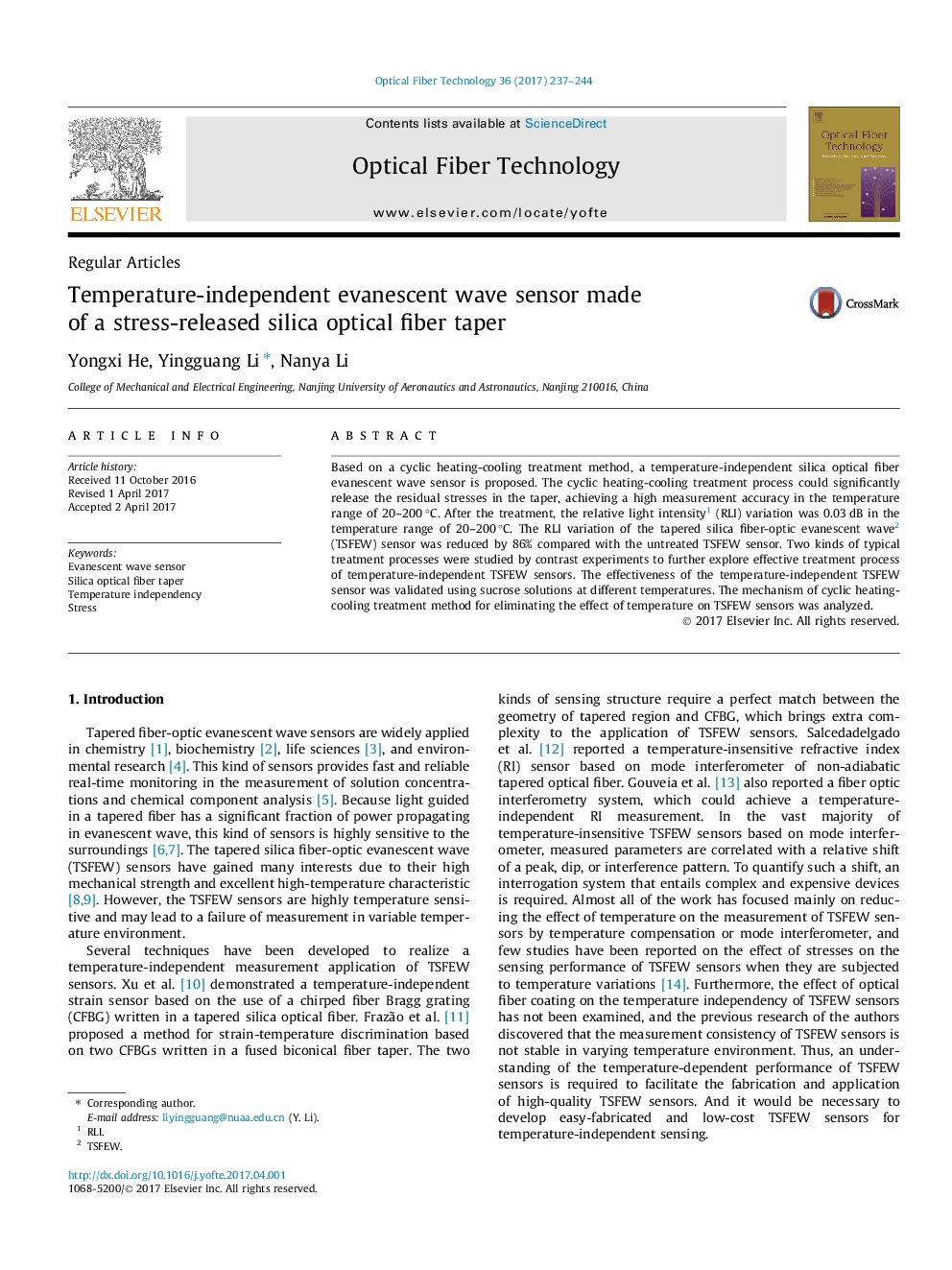| Article ID | Journal | Published Year | Pages | File Type |
|---|---|---|---|---|
| 4957051 | Optical Fiber Technology | 2017 | 8 Pages |
Abstract
Based on a cyclic heating-cooling treatment method, a temperature-independent silica optical fiber evanescent wave sensor is proposed. The cyclic heating-cooling treatment process could significantly release the residual stresses in the taper, achieving a high measurement accuracy in the temperature range of 20-200 °C. After the treatment, the relative light intensity1 (RLI) variation was 0.03 dB in the temperature range of 20-200 °C. The RLI variation of the tapered silica fiber-optic evanescent wave2 (TSFEW) sensor was reduced by 86% compared with the untreated TSFEW sensor. Two kinds of typical treatment processes were studied by contrast experiments to further explore effective treatment process of temperature-independent TSFEW sensors. The effectiveness of the temperature-independent TSFEW sensor was validated using sucrose solutions at different temperatures. The mechanism of cyclic heating-cooling treatment method for eliminating the effect of temperature on TSFEW sensors was analyzed.
Keywords
Related Topics
Physical Sciences and Engineering
Computer Science
Computer Networks and Communications
Authors
Yongxi He, Yingguang Li, Nanya Li,
